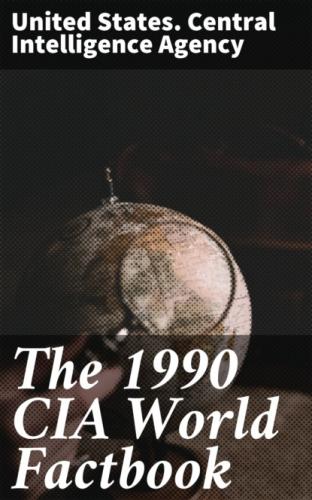Airports: 59 total, 57 usable; 31 with permanent-surface runways; none with runways over 3,659 m; 3 with runways 2,440–3,659 m; 25 with runways 1,220–2,439 m
Telecommunications: highly developed; 99,000 telephones in totally automatic system; tropospheric scatter and submarine cable links to Florida; stations—3 AM, 2 FM, 1 TV; 3 coaxial submarine cables;1 Atlantic Ocean INTELSAT earth station
- Defense Forces
Branches: Royal Bahamas Defense Force (a coast guard element only),
Royal Bahamas Police Force
Military manpower: NA
Defense expenditures: NA
——————————————————————————
Country: Bahrain
- Geography
Total area: 620 km2; land area: 620 km2
Comparative area: slightly less than 3.5 times the size of Washington, DC
Land boundaries: none
Coastline: 161 km
Maritime claims:
Continental shelf: not specific;
Territorial sea: 3 nm
Disputes: territorial dispute with Qatar over the Hawar Islands
Climate: arid; mild, pleasant winters; very hot, humid summers
Terrain: mostly low desert plain rising gently to low central escarpment
Natural resources: oil, associated and nonassociated natural gas, fish
Land use: 2% arable land; 2% permanent crops; 6% meadows and pastures; 0% forest and woodland; 90% other; includes NEGL% irrigated
Environment: subsurface water sources being rapidly depleted (requires development of desalination facilities); dust storms; desertification
Note: proximity to primary Middle Eastern crude oil sources and strategic location in Persian Gulf through which much of Western world's crude oil must transit to reach open ocean
- People
Population: 520,186 (July 1990), growth rate 3.2% (1990)
Birth rate: 28 births/1,000 population (1990)
Death rate: 3 deaths/1,000 population (1990)
Net migration rate: 8 migrants/1,000 population (1990)
Infant mortality rate: 19 deaths/1,000 live births (1990)
Life expectancy at birth: 71 years male, 76 years female (1990)
Total fertility rate: 4.1 children born/woman (1990)
Nationality: noun—Bahraini(s); adjective—Bahraini
Ethnic divisions: 63% Bahraini, 13% Asian, 10% other Arab, 8% Iranian, 6% other
Religion: Muslim (70% Shia, 30% Sunni)
Language: Arabic (official); English also widely spoken; Farsi, Urdu
Literacy: 40%
Labor force: 140,000; 42% of labor force is Bahraini; 85% industry and commerce, 5% agriculture, 5% services, 3% government (1982)
Organized labor: General Committee for Bahrain Workers exists in only eight major designated companies
- Government
Long-form name: State of Bahrain
Type: traditional monarchy
Capital: Manama
Administrative divisions: 11 municipalities (baladiyat, singular—baladiyah); Al Hadd, Al Manamah, Al Mintaqah al Gharbiyah, Al Mintaqah al Wusta, Al Mintaqah ash Shamaliyah, Al Muharraq, Ar Rifa wa al Mintaqah al Janubiyah, Jidd Hafs, Madinat Isa, Mintaqat Juzur Hawar, Sitrah
Independence: 15 August 1971 (from UK)
Constitution: 26 May 1973, effective 6 December 1973
Legal system: based on Islamic law and English common law
National holiday: National Day, 16 December
Executive branch: amir, crown prince and heir apparent, prime minister,
Cabinet
Legislative branch: unicameral National Assembly was dissolved 26 August 1975 and legislative powers were assumed by the Cabinet
Judicial branch: High Civil Appeals Court
Leaders: Chief of State—Amir Isa bin Salman Al KHALIFA (since 2 November 1961); Heir Apparent Hamad bin Isa Al KHALIFA (son of Amir; born 28 January 1950);
Head of Government—Prime Minister Khalifa bin Salman Al KHALIFA, (since 19 January 1970)
Political parties and pressure groups: political parties prohibited; several small, clandestine leftist and Shia fundamentalist groups are active
Suffrage: none
Elections: none
Communists: negligible
Member of: Arab League, FAO, G-77, GATT (de facto), GCC, IBRD, ICAO,
IDB—Islamic Development Bank, ILO, IMF, IMO, INTERPOL, ITU, NAM, OAPEC, OIC,
UN, UNESCO, UPU, WHO
Diplomatic representation: Ambassador Ghazi Muhammad AL-QUSAYBI; Chancery at 3502 International Drive NW, Washington DC 20008; telephone (202) 342–0741 or 342–0742; there is a Bahraini Consulate General in New York; US—Ambassador Dr. Charles W. HOSTLER; Embassy at Shaikh Isa Road, Manama (mailing address is P. O. 26431, Manama, or FPO New York 09526); telephone p973o 714151 through 714153
Flag: red with a white serrated band (eight white points) on the hoist side
- Economy Overview: The oil price decline in recent years has had an adverse impact on the economy. Petroleum production and processing account for about 85% of export receipts, 60% of government revenues, and 20% of GDP. In 1986 soft oil-market conditions led to a 5% drop in GDP, in sharp contrast wit the 5% average annual growth rate during the early 1980s. The slowdown in economic activity, however, has helped to check the inflation of the 1970s. The government's past economic diversification efforts have moderated the severity of the downturn but failed to offset oil and gas revenue losses.
GDP: $3.5 billion, per capita $7,550 (1987); real growth rate 0% (1988)
Inflation rate (consumer prices): 0.3% (1988)
Unemployment: 8–10% (1989)
Budget: revenues $1,136 million; expenditures $1,210 million, including capital expenditures of $294 million (1987)
Exports: $2.4 billion (f.o.b., 1988 est.); commodities—petroleum 80%, aluminum 7%, other 13%; partners—US, UAE, Japan, Singapore, Saudi Arabia
Imports: $2.5 billion (f.o.b., 1988 est.); commodities—nonoil 59%, crude oil 41%; partners—UK, Saudi Arabia, US, Japan
External debt: $1.1 billion (December 1989 est.)
Industrial production: growth rate - 3.1% (1987)
Electricity: 1,652,000 kW capacity; 6,000 million kWh produced, 12,800 kWh per capita (1989)
Industries: petroleum processing and refining, aluminum smelting, offshore banking, ship repairing
Agriculture: including fishing, accounts for less than 2% of GDP; not self-sufficient in food production; heavily subsidized sector produces fruit, vegetables, poultry, dairy products, shrimp, and fish; fish catch 9,000 metric tons in 1987
Aid: US commitments, including Ex-Im (FY70–79), $24 million; Western (non-US) countries, ODA and OOF bilateral commitments (1970–87), $28 million; OPEC bilateral aid (1979–89), $9.8 billion
Currency: Bahraini
